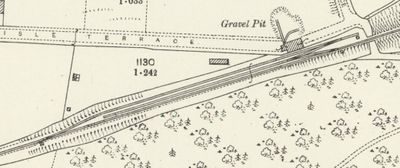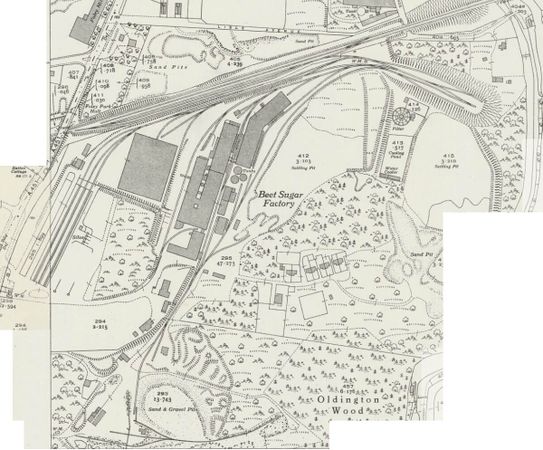Gravel Pit at Foley Park
A short-lived Gravel pit at Foley Park was served by its own private siding in the early 1900s.
On 12 November 1901, Major I.W.Pringle made an inspection of the "new gravel siding (Kellett's)" at Foley Park on behalf of Lieut. Col. Yorke of the Board of Trade and noted that "The facing points are provided with a lock, but not with a bar, and are each worked from a ground frame containing two levers. The ground frames are released by the key on the electric train staff for the section.". The following day, he recommended the Board of Trade to authorise the new connection.[1]
The 1902 Ordnance Survey map of Foley Park (right) shows the gravel pit with its own loop and siding. The pit was situated at the end of Lisle Avenue (then named Lisle Terrace) close to the underbridge which can be seen on right of the map. The area south of the line was still undeveloped at that time.
By the next revision of the map in 1926, the gravel siding north of the line had been removed and the area formerly occupied by the gravel pit had become part of the Empire Carpet Works buildings. Construction of the British Sugar Corporation's factory and its Foley Park sidings south of the line had also been completed, with the ground frame at the east end of those sidings being in the same location as that formerly serving the gravel sidings. The new layout can be seen at the top of this 1938 map.
See also
References
- ↑ Letter held at Shropshire Archives

